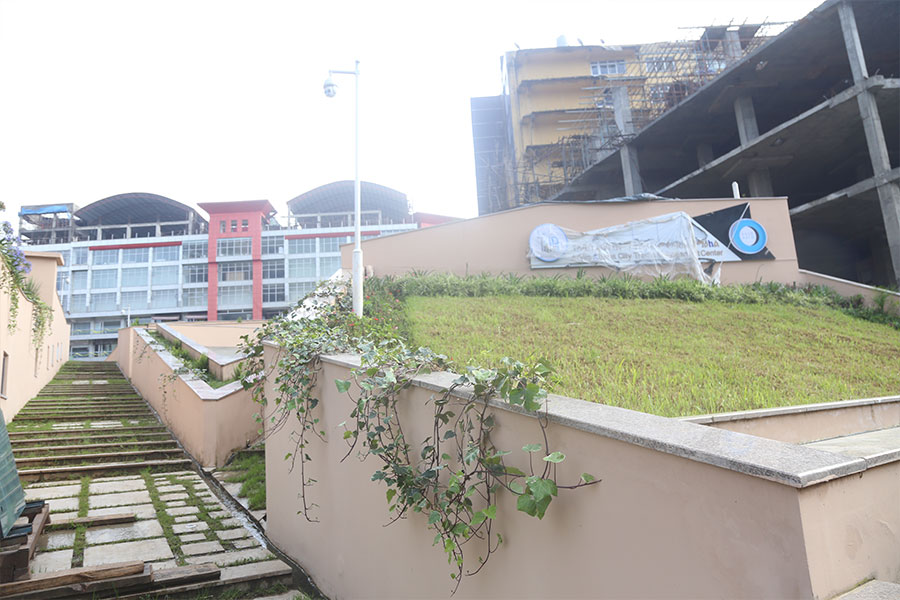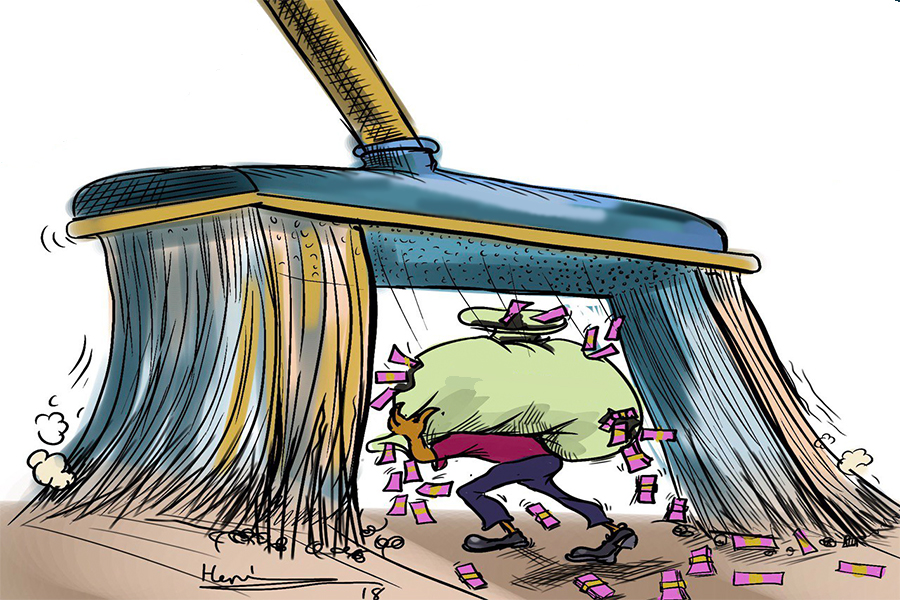
Viewpoints | Jan 25,2020
It was the eve of the Ethiopian New Year two years back. I was wandering at the southern end of my house when I spotted, at a muddy junction, a pregnant young woman heading in a similar direction.
In a flash, an agitated steer charged, and I screamed as the beast nearly gored this expecting mother. Thankfully, the lady ducked into an pit next to a nearby house, and the foamy, gobbling, burbling animal mass continued its juggernaut sprint.
Low to the ground and thickly muscled, eyes bulging, the steer was like an overheated coffee kettle. The pregnant lady was lucky, indeed.
The open space she went into used to be a garbage hot spot. A while after the Running of the Bull event, an intrepid man and two youngsters employed by myself, made history at the site by working to close a waist-sized hole and fix a leaking water line that was left unattended. We put up with judgmental stares to finish the job.
Now a gravel road has been built in that place, and almost every available open space is fenced in for beautiful greenery. Ironically, it was a failing in neighbourhood design that helped the woman escape the charging bull.
What was happening on that New Year’s Eve begs an understanding of animal psychology. Well-designed facilities reduce stress on both cattle and increase profits for their handlers. When arranged properly, the cattle facility itself fights diseases, facilitates reproduction and increases weight gain, according to the Food & Agriculture Organisation (FAO).
Cattle have long memories. Handled roughly, they will be more difficult to control. They do not forget easily. They get excited in just a few seconds, but it takes 20 to 30 minutes for the heart rate to return to normal in severely agitated cattle.
"You can tell what kind of a stockman a person is by looking at the behaviour of his cattle," has more truth to it than is admitted.
Increased production through the humane treatment of slaughter animals can be achieved. Less bruising and injury can reduce carcass damage and waste and increase value; decrease mortality; improve the quality of meat and the value of hides and skins.
Livestock feel pain, obviously, but they also fear it. Given their brain structures, it is likely that they suffer pain in the same way as humans, as some studies have indicated.
Fear and pain are strong causes of stress in livestock, and stress affects the quality of meat obtained from them.
There is a scientific explanation for this. The energy required for muscle activity in a live animal is obtained from sugars - glycogen. The healthier and more well-rested an animal is, the more glycogen content there will be in the muscle. After the animal has been slaughtered, the glycogen in the muscle is converted into lactic acid, making the muscle and carcass firm, according to True Aussie Beef & Lamb, an Australian meat products company.
”This lactic acid is necessary to produce meat, which is tasty and tender, of good quality and colour,” its website says.
But do not take a meat seller’s word for it. The FAO concurs. If an animal is stressed before and during slaughter, the glycogen levels are raised, and the lactic acid level produced in the meat after slaughter is reduced, according to the FAO’s 2001 report. This has serious adverse effects on the meat.
”Hides and skins should have the highest value of any product of slaughter animals, other than the carcass,” the report adds. ”Useful leather can be made only from undamaged and properly treated skins.”
In 2013, a study was undertaken on animal welfare in Ethiopia. Titled ”Animal welfare in Ethiopia: Handling of cattle during transport and operations at Kera Abattoir, Addis Abeba,” by Antonia Grönvall, it draws a more illuminating picture of the situation.
Long-distance journeys in the country force animals to cross big rivers without the aid of a bridge. And these journeys taken without sufficient food, water and resting time cause stress. The situation is exasperated further by high temperatures and heavy rain, both during transport and in the holding pen.
The trek of cattle to the marketplace showed about a 16pc death rate, where 7.1pc was due to car accidents and the rest from lack of water and food, according to a study that followed 318 cattle from a market in Guder, in the Oromia Regional State, to Addis Abeba, a distance of over 100Km.
Part of the reason for this was that the vehicles being used to transport the cattle did not have the necessary devices to improve animal welfare.
This is not helped by the lack of stunning, where cattle lose some or all of their conscious brain function, before slaughter. This is not only due to religious reasons but because of a lack of modern slaughter techniques. The matter of bad hygiene, leading to the contamination of meat, is also a worrying factor.
Matters are exasperated in the holding pen, animals are beaten on the head, and their tails pulled in an abusive manner. Many animals exhibit stressed behaviours - fighting, mounting other animals, running and panting.
Evidently, abattoirs ensuring animals are adequately rested, not overcrowded and protected from the weather are necessary. Strictly implementing hygienic procedures to ensure that only animals that are sufficiently clean are slaughtered should go without saying. Making sure that the feed has been appropriately withdrawn before slaughter; maintaining identification of animals until the time of slaughter and dressing; and conveying relevant information on animals to facilitate ante- and post-mortem inspection are all critical to the meat slaughter process.
It is otherwise probable that we will not only be consuming meat of poor quality but the chances of an expecting mother being gored by an agitated steer is much higher.
PUBLISHED ON
Sep 06,2020 [ VOL
21 , NO
1062]


Viewpoints | Jan 25,2020

Fortune News | May 13,2023

Fortune News | Jun 12,2021

Sponsored Contents | Jul 24,2022

Radar | Jun 15,2019

Fortune News | Jul 24,2021

Fortune News | Feb 15,2020

Radar | Feb 25,2023

Advertorials | Sep 05,2024

Featured | Sep 10,2023

Dec 22 , 2024 . By TIZITA SHEWAFERAW
Charged with transforming colossal state-owned enterprises into modern and competitiv...

Aug 18 , 2024 . By AKSAH ITALO
Although predictable Yonas Zerihun's job in the ride-hailing service is not immune to...

Jul 28 , 2024 . By TIZITA SHEWAFERAW
Unhabitual, perhaps too many, Samuel Gebreyohannes, 38, used to occasionally enjoy a couple of beers at breakfast. However, he recently swit...

Jul 13 , 2024 . By AKSAH ITALO
Investors who rely on tractors, trucks, and field vehicles for commuting, transporting commodities, and f...

Oct 25 , 2025
The regulatory machinery is on overdrive. In only two years, no fewer than 35 new pro...

Oct 18 , 2025
The political establishment, notably the ruling party and its top brass, has become p...

Oct 11 , 2025
Ladislas Farago, a roving Associated Press (AP) correspondent, arrived in Ethiopia in...

Oct 4 , 2025
Eyob Tekalegn (PhD) had been in the Governor's chair for only weeks when, on Septembe...